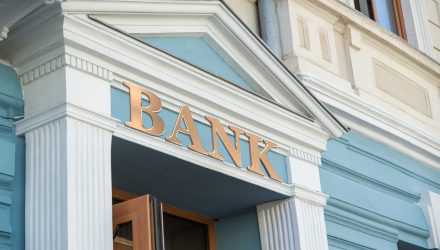Historically, regional banks are positively correlated to rising Treasury, indicating exchange traded funds, such as the SPDR S&P Regional Banking ETF (NYSEArca: KRE), should be thriving in the current environment. They are not.
KRE, the largest regional bank ETF by assets, has traded slightly lower on a year-to-date basis. More importantly, the fund has been drubbed over the past month, a period that includes the Federal Reserve’s third interest rate hike of 2018. Over that period, KRE has shed more than 7%.
“Regional banks tracked by the KRE ETF just posted an eighth-straight session of losses, the group’s longest losing streak since 2016, and has slumped to an eight-month low,” reports CNBC.
Not Responding to Higher Interest Rates
Higher interest rates would help widen the difference between what banks charge on loans and pay on deposits, which would boost earnings for the financial sector. Regional banks are among the stocks most positively correlated to rising interest rates because higher rates improve net interest margins.
The $5 billion KRE tracks the S&P Regional Banks Select Industry Index and holds 127 stocks with a weighted average market value of $8.51 billion.
Related: Bank, Financial Sector ETFs Could Continue to Lag Behind
